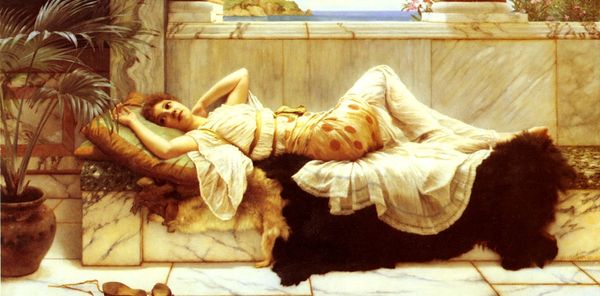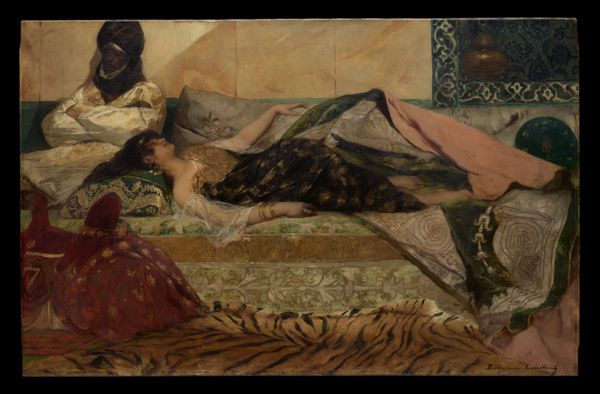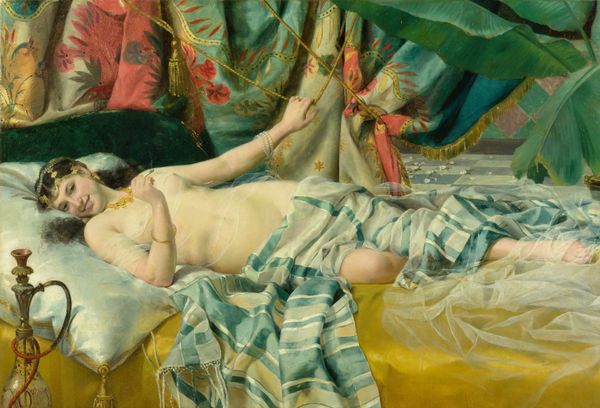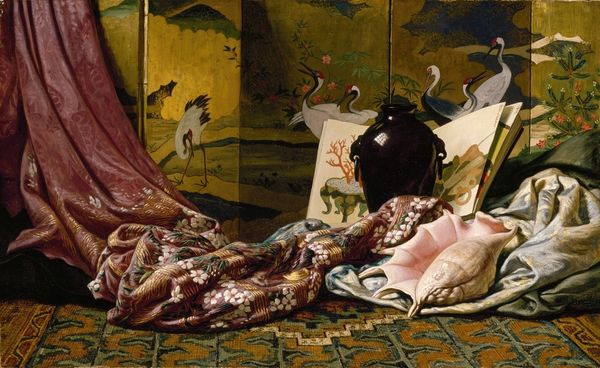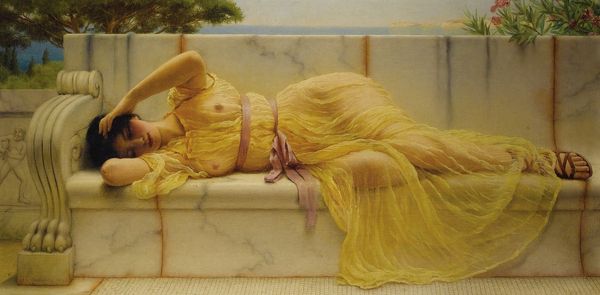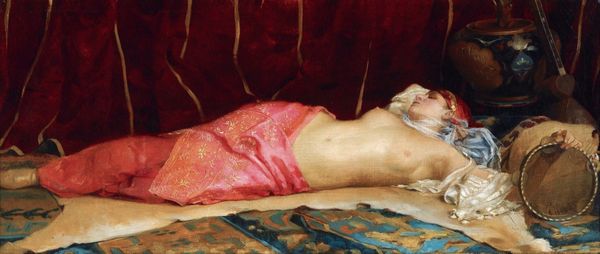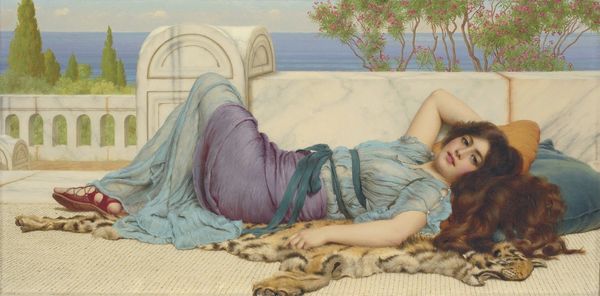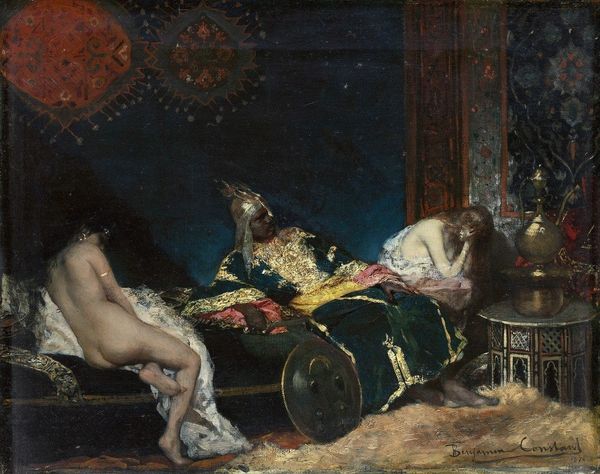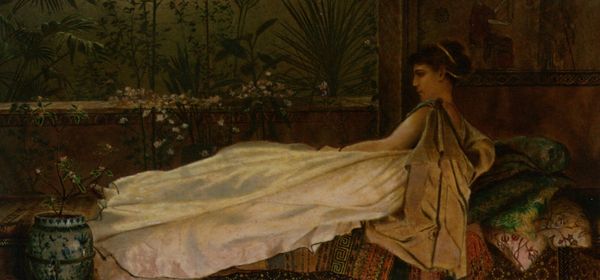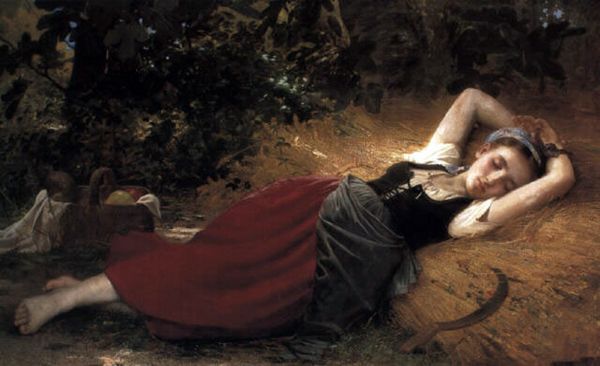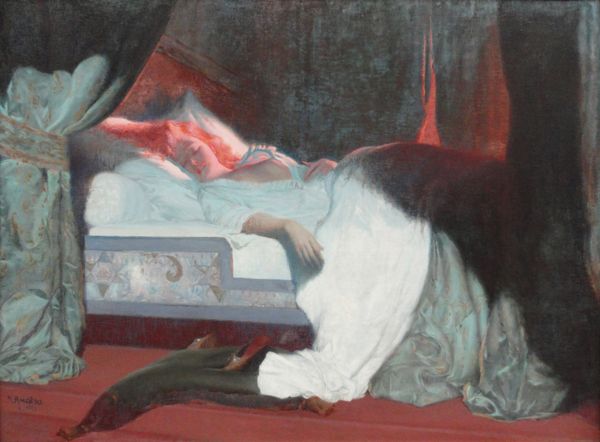
#
portrait
#
gouache
#
acrylic
#
possibly oil pastel
#
oil painting
#
acrylic on canvas
#
spray can art
#
underpainting
#
painterly
#
painting painterly
#
female-portraits
#
watercolor
Dimensions: 62.5 x 102.7 cm
Copyright: Public domain
Editor: So, here we have John William Godward's "Endymion," created in 1893. It’s striking how peaceful she looks, almost as if time stands still for her alone. What’s your take on this, and how do you interpret this work? Curator: The immediate stillness is seductive, isn't it? But let's push beyond the aesthetic appeal. Godward, and the Aesthetic movement he was part of, were consciously retreating from industrial modernity into an idealized, often Orientalist, vision of the past. This so-called "Greek" or "Roman" scene, meticulously painted, isn’t just about beauty. Consider what it *omits*. Editor: Omissions? You mean like the Industrial Revolution? Curator: Exactly! The grinding poverty, the class struggles, the burgeoning feminist movements… all erased to create this timeless fantasy. Ask yourself: who benefits from such an escape? Who is allowed this kind of leisurely slumber, and who is excluded? It invites a critique of power, gender, and the construction of history itself. Is this supposed ideal accessible, or even desirable, for all women? Editor: So, it's not just a pretty picture; it's a statement, albeit a quiet one, about social ideals… or perhaps, the avoidance of them? Curator: Precisely. Godward, through his strategic erasures and idealized imagery, inadvertently reveals the limitations and biases inherent in his artistic vision. It prompts us to question the narratives we construct about history and who gets to define them. Editor: I’ll never look at a neoclassical painting the same way again! Thanks for highlighting the socio-political dimension, it adds so much depth. Curator: And thank you for being willing to challenge the surface. Art is rarely just 'beautiful' or 'ugly'; it’s a product of its time, reflecting and refracting the complex realities of its creation.
Comments
No comments
Be the first to comment and join the conversation on the ultimate creative platform.
